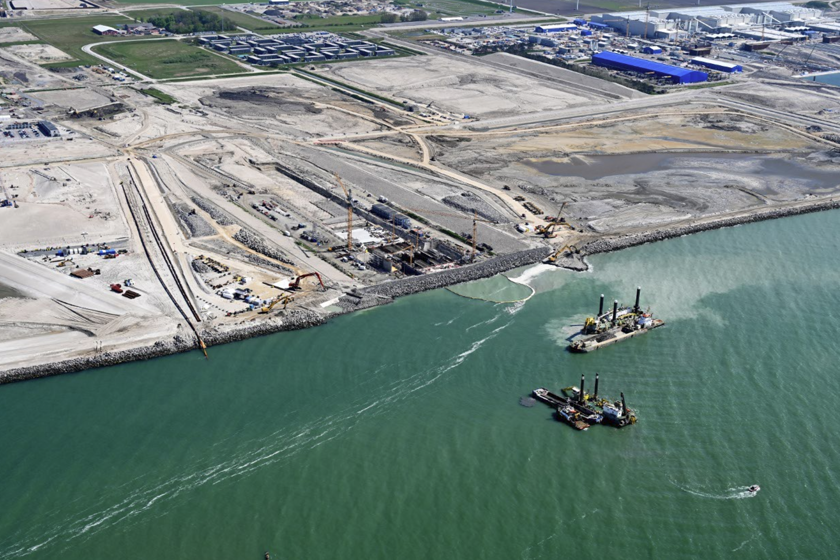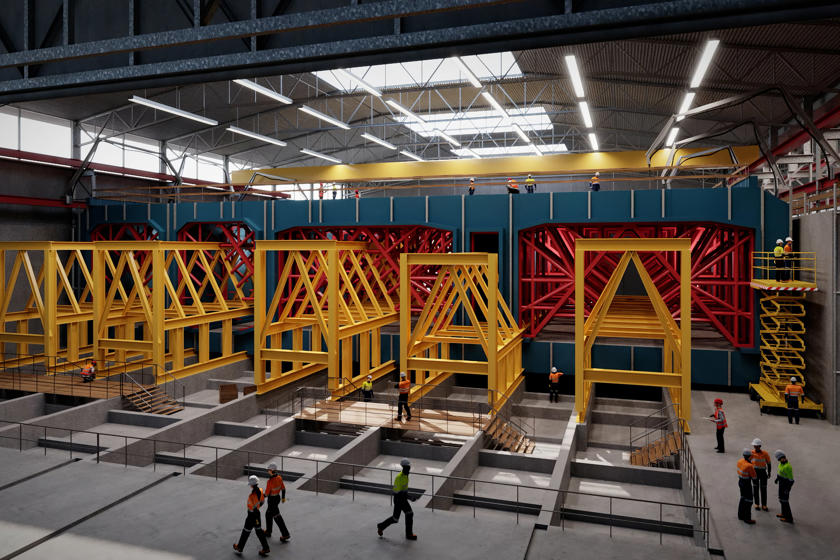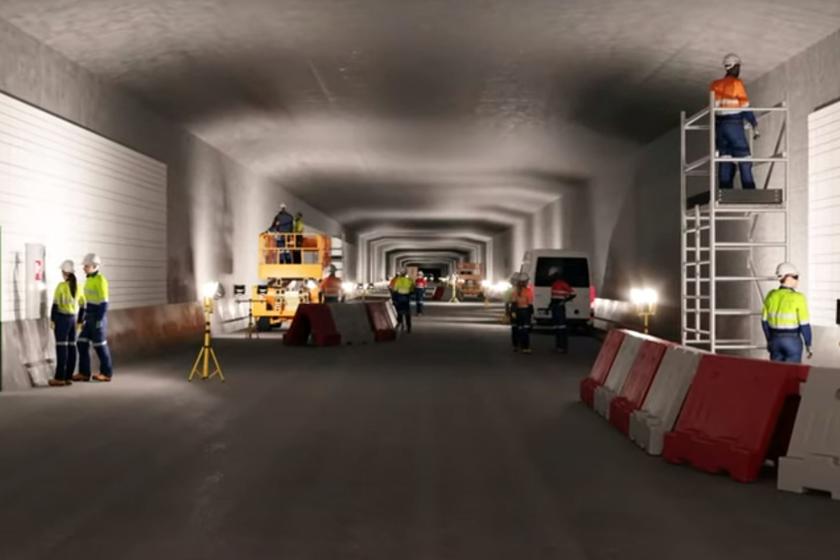

The portal is the entrance to the tunnel
A tunnel portal is built in both Denmark near Rødbyhavn and in Germany near Puttgarden. The portals connect the tunnel's railway and motorway with the upgraded and newly built roads and railways in the hinterland.
Work on the construction pit for the tunnel portal on the Danish side started in 2020 and on the German side the following year. Work on the tunnel portal itself started in 2022.
In the spring of 2024, a permanent dike has been constructed across the Danish tunnel portal, which means that the outer, temporary dike that was built to shield the sea has been removed. This means that the coastline on the Danish side is straightened.

A standard-element is 217 meters long and weighs 73,500 tonnes
Casting the tunnel elements
When the factory is in operation, a standard element will be produced approximately every second week for some three and a half years. Production of 79 standard and 10 special elements will be required in total.
Each special element will include a 'basement' area for technology. This will make the construction process and maintenance of the finished tunnel easier. The tunnel elements are manufactured using industrial series production, which makes the construction process considerably more efficient.

See how an immersed tunnel is built
Laser focus on quality
The elements will be cast step-by-step in segments of approximately 24 metres in the factory. Nine segments comprise one standard element and the whole process takes about nine weeks.
A high degree of uniformity and quality in the casting can be ensured because it takes place inside climate-controlled halls. This is important as the Fehmarnbelt tunnel is designed to operate for at least 120 years.

The elements will be immersed and coupled together
When an element is ready for shipment, it gets waterproof bulkheads fitted at both ends and is towed into place using tugs.
The elements are then lowered to the seabed with high precision and are carefully coupled together. There is a sealed space between the bulkheads so that huge external pressure pushes them together when the water is pumped out. This ensures a completely waterproof connection.

See how we immerse a tunnel element
Installation of the tunnel interiors
Once the elements are assembled, work on the tunnel’s technical and mechanical installations can begin. These include railway tracks, ventilation, cameras, communication systems, signage, painting and much more.
Each of these systems will be thoroughly tested in the final part of the construction phase prior to the expected opening in mid-2029.
